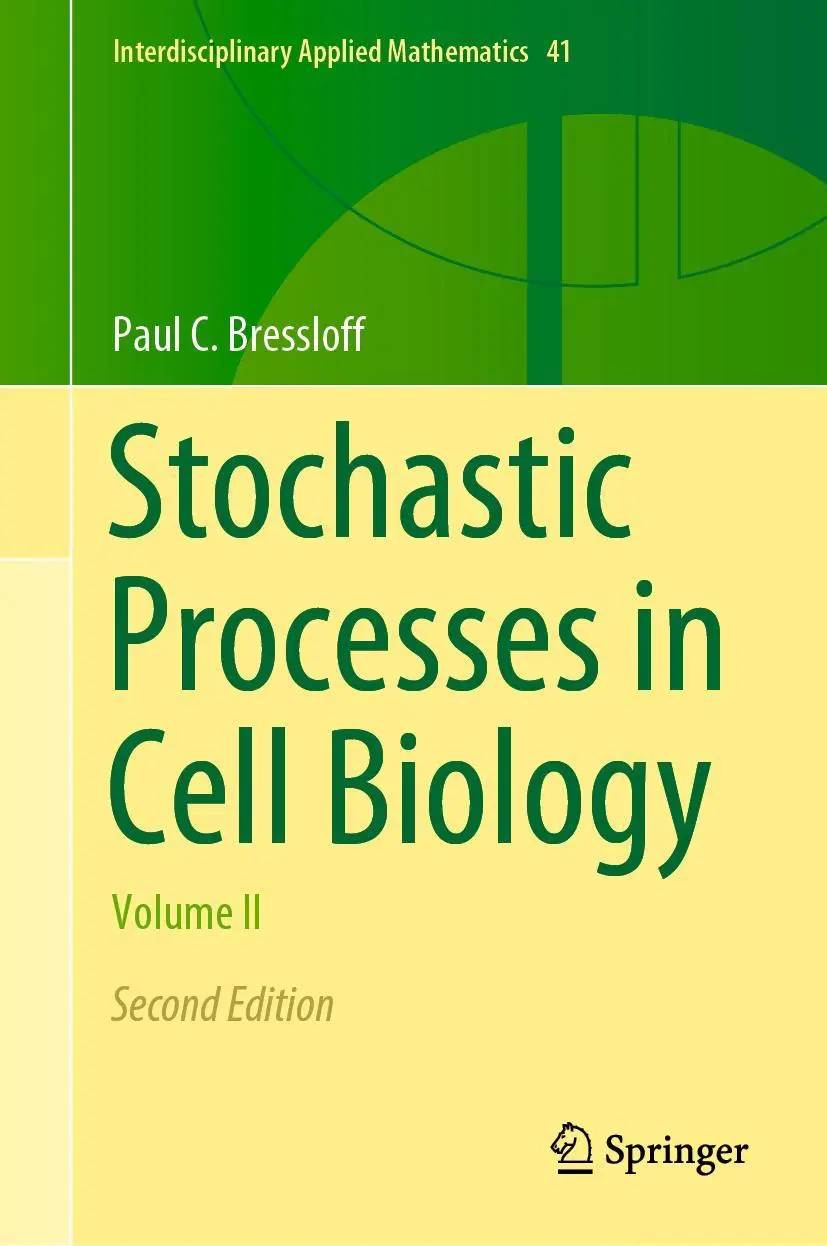This book develops the theory of continuous and discrete stochastic processes within the context of cell biology. In the second edition the material has been significantly expanded, particularly within the context of nonequilibrium and self-organizing systems. Given the amount of additional material, the book has been divided into two volumes, with volume I mainly covering molecular processes and volume II focusing on cellular processes.
A wide range of biological topics are covered in the new edition, including stochastic ion channels and excitable systems, molecular motors, stochastic gene networks, genetic switches and oscillators, epigenetics, normal and anomalous diffusion in complex cellular environments, stochastically-gated diffusion, active intracellular transport, signal transduction, cell sensing, bacterial chemotaxis, intracellular pattern formation, cell polarization, cell mechanics, biological polymers and membranes, nuclear structure and dynamics, biological condensates, molecular aggregation and nucleation, cellular length control, cell mitosis, cell motility, cell adhesion, cytoneme-based morphogenesis, bacterial growth, and quorum sensing. The book also provides a pedagogical introduction to the theory of stochastic and nonequilibrium processes ¿ Fokker Planck equations, stochastic differential equations, stochastic calculus, master equations and jump Markov processes, birth-death processes, Poisson processes, first passage time problems, stochastic hybrid systems, queuing and renewal theory, narrow capture and escape, extreme statistics, search processes and stochastic resetting, exclusion processes, WKB methods, large deviation theory, path integrals, martingales and branching processes, numerical methods, linear response theory, phase separation, fluctuation-dissipation theorems, age-structured models, and statistical field theory. This text is primarily aimed at graduate students and researchers working in mathematical biology, statistical and biological physicists, and applied mathematicians interested in stochastic modeling. Applied probabilists should also find it of interest. It provides significant background material in applied mathematics and statistical physics, and introduces concepts in stochastic and nonequilibrium processes via motivating biological applications. The book is highly illustrated and contains a large number of examples and exercises that further develop the models and ideas in the body of the text. It is based on a course that the author has taught at the University of Utah for many years.
This book develops the theory of continuous and discrete stochastic processes within the context of cell biology. In the second edition the material has been significantly expanded, particularly within the context of nonequilibrium and self-organizing systems. Given the amount of additional material, the book has been divided into two volumes, with volume I mainly covering molecular processes and volume II focusing on cellular processes.
A wide range of biological topics are covered in the new edition, including stochastic ion channels and excitable systems, molecular motors, stochastic gene networks, genetic switches and oscillators, epigenetics, normal and anomalous diffusion in complex cellular environments, stochastically-gated diffusion, active intracellular transport, signal transduction, cell sensing, bacterial chemotaxis, intracellular pattern formation, cell polarization, cell mechanics, biological polymers and membranes, nuclear structure and dynamics, biological condensates, molecular aggregation and nucleation, cellular length control, cell mitosis, cell motility, cell adhesion, cytoneme-based morphogenesis, bacterial growth, and quorum sensing. The book also provides a pedagogical introduction to the theory of stochastic and nonequilibrium processes ¿ Fokker Planck equations, stochastic differential equations, stochastic calculus, master equations and jump Markov processes, birth-death processes, Poisson processes, first passage time problems, stochastic hybrid systems, queuing and renewal theory, narrow capture and escape, extreme statistics, search processes and stochastic resetting, exclusion processes, WKB methods, large deviation theory, path integrals, martingales and branching processes, numerical methods, linear response theory, phase separation, fluctuation-dissipation theorems, age-structured models, and statistical field theory. This text is primarily aimed at graduate students and researchers working in mathematical biology, statistical and biological physicists, and applied mathematicians interested in stochastic modeling. Applied probabilists should also find it of interest. It provides significant background material in applied mathematics and statistical physics, and introduces concepts in stochastic and nonequilibrium processes via motivating biological applications. The book is highly illustrated and contains a large number of examples and exercises that further develop the models and ideas in the body of the text. It is based on a course that the author has taught at the University of Utah for many years.
Über den Autor
Paul Bressloff is a Professor of Mathematics in the Department of Mathematics at the University of Utah, where he is a faculty member of the Mathematical Biology Group and the Brain Institute. He is also a Visiting Professor at the Mathematical Institute, University of Oxford and INRIA, Sophia-Antipolis. Professor Bressloff's research interests lie in the areas of mathematical neuroscience and theoretical biophysics.
Zusammenfassung
First graduate textbook in interdisciplinary applied mathematics that focuses on applications of stochastic processes to cell biology
Introduces concepts in stochastic process via motiviating biological applications
Solutions to exercises provided as supplementary material
Includes large number of examples and exercises, highly illustrated
Inhaltsverzeichnis
Sensing the environment.- Intracellular pattern formation and reaction-diffusion processes.- Statistical mechanics and dynamics of polymers and membranes.- Self-organization and assembly of cellular structures.- Dynamics and regulation of the cytoskeleton.- Bacterial population growth and collective behavior.- Stochastic reaction-diffusion processes.



